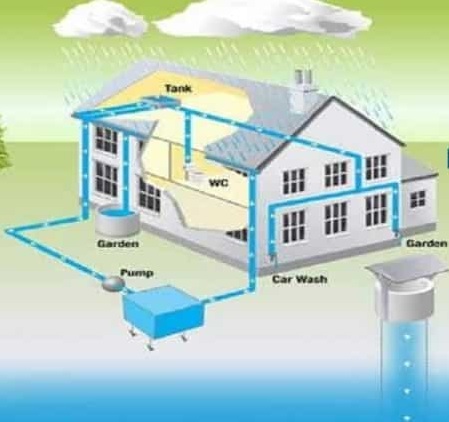Rainwater Harvesting:
Rainwater harvesting is the method by which rainwater is collected, stored, and further utilized for different purposes.
Rainwater is collected from a special type of roof. This rainwater is sent to a tank, reservoir, or aquifer which has percolation.

Rainwater Harvesting Methods:
There are two methods of rainwater harvesting.
- Surface Runoff Harvesting.
- Rooftop Rainwater Harvesting.
I have briefly described the above-mentioned methods.
1. Surface Runoff Harvesting:
In metropolitan territories, water streams away as surface spillover. This overflow can be gotten and utilized for reviving springs by embracing fitting techniques.
2. Rooftop Rainwater Harvesting:
It is an arrangement of getting water where it falls. In housetop reaping, the rooftop turns into the catchment, and the water is gathered from the top of the house/building.
It can either be put away in a tank or redirected to a counterfeit revive framework. This technique is more affordable and extremely valuable and, whenever executed effectively, helps in increasing the groundwater level of the territory.

Suitable buildings where rooftop rainwater harvesting systems can be installed are given below.
- Residential houses
- Villas
- School and college building
- Railway stations
- Government buildings
- Factories
Advantages of Rainwater Harvesting
- very cheap method to collect and store water from the roof.
- Decrease the demand the water.
- Decrease water bills.
- The amount of imported water from outside can be restricted up to the certain limit.
- Stored water can be used anytime in future.
- It improves the quality and quantity of groundwater.
- No skilled labor is required to operate this system.
